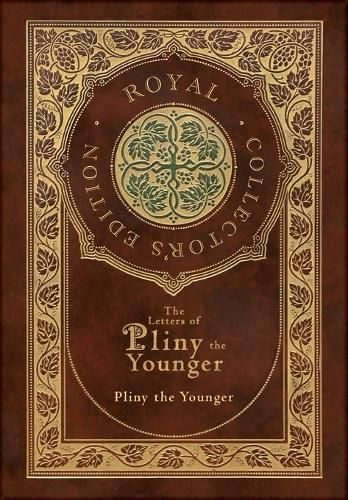Readings Newsletter
Become a Readings Member to make your shopping experience even easier.
Sign in or sign up for free!
You’re not far away from qualifying for FREE standard shipping within Australia
You’ve qualified for FREE standard shipping within Australia
The cart is loading…






This title is printed to order. This book may have been self-published. If so, we cannot guarantee the quality of the content. In the main most books will have gone through the editing process however some may not. We therefore suggest that you be aware of this before ordering this book. If in doubt check either the author or publisher’s details as we are unable to accept any returns unless they are faulty. Please contact us if you have any questions.
The collection of Pliny's letters is divided into ten books. His career as a young man is described in the earlier letters, which include tributes to notable figures. Advice is offered to friends, references are given, political support is discussed and Pliny comments on many other aspects of Roman life. The eruption of Mount Vesuvius is detailed in two letters in Book Six. They were written to the historian Tacitus, a close friend. Pliny also wrote letters describing the gardens at his country villas. The tenth book contains letters to and from the emperor Trajan.
The most famous literary figure to appear in Pliny's letters is his uncle, Pliny the Elder. His nephew provides details of how his uncle worked tirelessly to finish his magnum opus, the Historia Naturalis (Natural History). As heir to his uncle's estate, Pliny the Younger inherited the Elder's large library, benefiting from the acquisition. Pliny's letters about his gardens are the world's oldest sources of the information on how gardens were used in the ancient world and the considerations that went into their design.
This case laminate collector's edition includes a Victorian inspired dust-jacket.
$9.00 standard shipping within Australia
FREE standard shipping within Australia for orders over $100.00
Express & International shipping calculated at checkout
Stock availability can be subject to change without notice. We recommend calling the shop or contacting our online team to check availability of low stock items. Please see our Shopping Online page for more details.
This title is printed to order. This book may have been self-published. If so, we cannot guarantee the quality of the content. In the main most books will have gone through the editing process however some may not. We therefore suggest that you be aware of this before ordering this book. If in doubt check either the author or publisher’s details as we are unable to accept any returns unless they are faulty. Please contact us if you have any questions.
The collection of Pliny's letters is divided into ten books. His career as a young man is described in the earlier letters, which include tributes to notable figures. Advice is offered to friends, references are given, political support is discussed and Pliny comments on many other aspects of Roman life. The eruption of Mount Vesuvius is detailed in two letters in Book Six. They were written to the historian Tacitus, a close friend. Pliny also wrote letters describing the gardens at his country villas. The tenth book contains letters to and from the emperor Trajan.
The most famous literary figure to appear in Pliny's letters is his uncle, Pliny the Elder. His nephew provides details of how his uncle worked tirelessly to finish his magnum opus, the Historia Naturalis (Natural History). As heir to his uncle's estate, Pliny the Younger inherited the Elder's large library, benefiting from the acquisition. Pliny's letters about his gardens are the world's oldest sources of the information on how gardens were used in the ancient world and the considerations that went into their design.
This case laminate collector's edition includes a Victorian inspired dust-jacket.